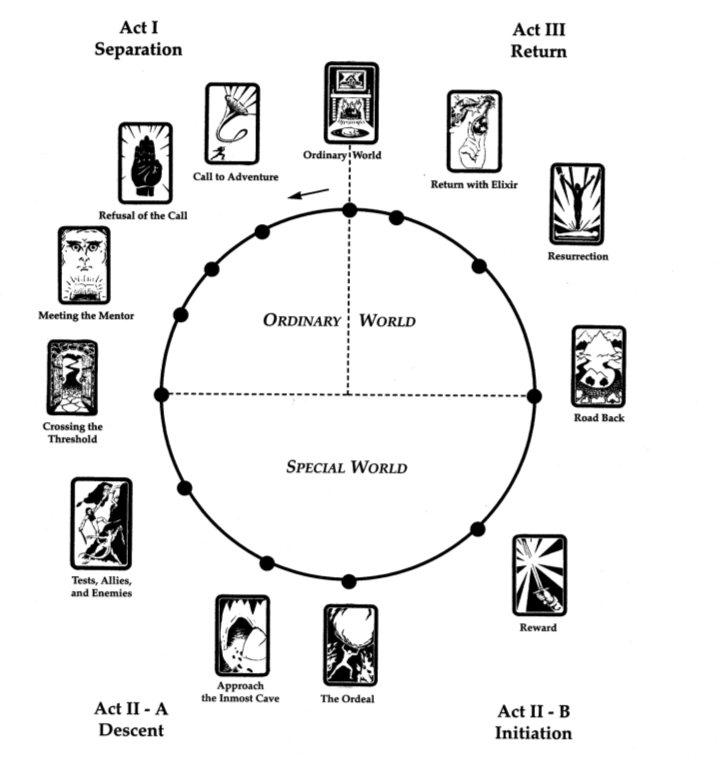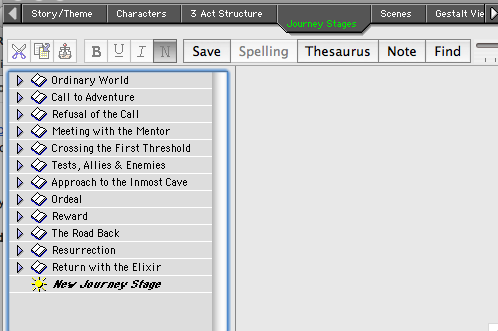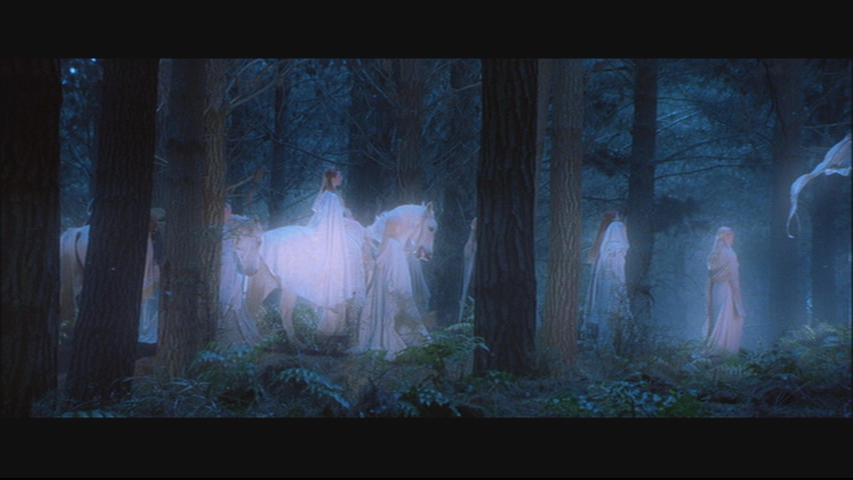Myth, the Numinous, and Cultural Studies
Ted Friedman / Georgia State University – Atlanta

For the last few years, I’ve been preoccupied with a concept that hasn’t received much academic attention lately: myth. Specifically, the idea that popular culture narratives are forms of myth.
The heyday for this turn of thinking was the 1960s and 1970s. That was when literary and film scholars influenced by Carl Jung and Northrop Frye formed the “myth and symbol” school, looking for transcendental archetypes in modern narratives.1 At the same time, structuralists inspired by Claude Levi-Strauss studied media myths as self-contained signifying systems.2 Those more suspicious of myth nonetheless accepted it as a useful conceptual apparatus: Roland Barthes‘ Mythologies (translated into English in 1972) inspired Marxist critics to demystify the stories we live by.3
In the 1980s, myth lost its currency as a category of analysis in media studies. Postmodernists grew wary of myth critics’ tendency to find the same archetypal metanarrative wherever they looked.4 Anthropologists critiqued the ahistorical urge to equate mass media storytelling with ancient systems of belief. And post-Marxists began to question drawing easy distinctions between myth and reality.
But as myth as a keyword drifted out of the academy, it emerged as a hugely influential concept in popular culture. Joseph Campbell, the most influential popularizer of Jung’s ideas, became first a crossover success as an author, then a posthumous celebrity as the star of the 1988 PBS series with Bill Moyers, The Power of Myth.5

Campbell’s The Hero with a Thousand Faces, first published in 1949, argued that all hero myths are versions of one, universal “monomyth.”6 His book was an inspiration to filmmaker George Lucas, who used Campbell’s monomyth as his model for Star Wars. With the success of that film, many other Hollywood screenwriters began turning to Campbell’s ideas.
In 1985 Christopher Vogler, a newly hired story analyst for Disney’s animation division, distributed a memo outlining Campbell’s Hero’s Journey. 7 Vogler’s memo became a touchstone at Disney and other firms, forming the basis for films such as 1994’s The Lion King, one of the top-grossing movies of all time. Vogler subsequently left Disney to become a freelance screenwriting teacher and consultant, and turned his memo into The Writer’s Journey, a step-by-step how-to for applying Campbell’s ideas to screenplays.8 Vogler boils down the seventeen stages of Campbell’s Journey to a tidier twelve steps:

The Writer’s Journey, now in its third edition, is one of the most successful screenwriting manuals ever published, and Vogler is one of the most in-demand of screenwriting teachers and consultants. Vogler’s influence is so great that today screenplay outlining software programs such as Power Structure give writers the option of organizing their screenplays around Vogler’s 12 steps, as an alternative to the traditional three-act structure popularized in Syd Field’s canonical text, Screenplay.

At the same time that myth has become a touchstone for screenwriters, it’s also become a keyword for the New Age movement, inspired by Campbell’s injunction to “follow your bliss.” The very ubiquity of the concept of myth in American popular culture may help explain its absence from academic discourse – a term which once held a lot of academic cachet has become awfully déclassé. But as scholars of popular culture we ought to take vernacular theory seriously, and to try to understand the continuing resonance of a concept we’d thought we’d left behind.10
Most attempts that have been made by critics to explain the appeal of Campbell’s “Hero’s Journey” have emphasized his convenient formula. Thus, Henry Jenkins in Convergence Culture concludes that it functions as a narrative shorthand: “Audience familiarity with this basic plot structure allows script writers to skip over transitional or expository sequences, throwing us directly into the heart of the action.”11 In this vein, Jenkins promotes a limited return to the concept of myth, as a way to recognize certain parallels between the influence of canonical texts of the past such as The Odyssey and contemporary “transmedia storytelling” in the Matrix and Star Wars universes (while being quick to recognize the substantial differences between how folk tales were once produced and consumed, compared to today’s mass media system).
But in highlighting Campbell’s structuralism, Jenkins tellingly ignores the greater half of his appeal: his mysticism. For Campbell, myth is important not simply because it organizes familiar narrative structures, but because it an avenue towards engaging the unconscious and finding spiritual meaning. To use Carl Jung’s language, it is about the numinous.12
As Andrew Von Hendy explains in The Modern Construction of Myth, the spiritual dimension is at the heart of the origin of the concept.13 The term emerged in the Romantic era, in response to the Enlightenment’s fraying of religious certainty. It from the beginning had a dual resonance: it reflected a yearning for transcendent meaning, but already a nostalgia for a time when such meaning could be taken for granted. All myth, in this sense, is “modern myth,” since the very invention of the concept of myth was a reaction to what Max Weber described as modernity’s dis-enchantment of the world.14

It is this numinous aspect of myth which has made it both compelling and discomfiting for critical theory. For intellectual traditions rooted in Freud’s and Marx’s hermeneutics of suspicion, there’s no independent human capacity for spirituality. The yearning for transcendental meaning is only a symptom of the fear of death or an outlet for class antagonism. But perhaps our postmodern skepticism could extend to questioning the limits of scientific materialism. The survival of the concept of myth may represent not the tenacity of an illusion, but the return of the repressed in a world outwardly more disenchanted than ever. As Jung argues, myths tend to compensate for those aspects of personality most neglected in a society.15
Take Star Wars. The franchise has inspired innumerable academic studies of fan culture, celebrating the creativity and autonomy of its audiences.16 But scholars’ emphasis on fan creativity, I’d suggest, evades a more fundamental question: why Star Wars? Why is it this world, in particular, which has inspired such energy and loyalty? The answer, I’d suggest, is in The Force: the mystical system of energy that powers the Jedi Knights and governs Lucas’s universe. The Force is not exactly a religious concept: while a handful of fans mark “Jedi” down as their religion on census forms, most recognize that it’s a fictional conceit. But it’s nonetheless central to a story that resonates – a myth that captures the imagination and often won’t let go. It’s perhaps not surprising that the most devoted Star Wars fans – myself included – tend to be “geeks” who work and play in the most highly technologized sectors of the global economy. In that most postmodern of contexts, the myth of The Force has taken the place, at least in fantasy, of more familiar forms of faith.17

Image Credits:
1. Roland Barthes’ Mythologies marked the heyday of Marxist myth criticism
2. Joseph Campbell became a posthumous star on the PBS series The Power of Myth
3. Christopher Vogler’s version of Joseph Campbell’s Hero’s Journey, as visualized in Stuart Voytilla’s Myth and the Movies: Author’s image
4. The program Power Structure allows writers to organize their screenplays according to Campbell’s and Vogler’s “Hero’s Journey” structure: Author’s image
5. The Passing of the Elves in The Lord of the Rings, J. R. R. Tolkien’s image of the disenchantment of the world: Author’s image
6. Faith in the force
Please feel free to comment.
- See Northrop Frye, Anatomy of Criticism (Princeton, NJ: Princeton University Press, 1966); Northrop Frye and L.C. Knights, eds., Myth and Symbol: Critical Approaches and Applications (Lincoln, NE: University of Nebraska Press, 1963); Charles Eric Reeves, “Myth Theory and Criticism,” The Johns Hopkins Guide to Literary Theory and Criticism, Second Edition, eds. Michael Groden, Martin Kreisworth, and Imre Szeman (Baltimore, MD: Johns Hopkins University Press, 2004) [↩]
- See Claude Levi-Strauss, The Savage Mind (Chicago, IL: University of Chicago Press, 1966); Will Wright, Sixguns and Society: A Structural Study of the Western (Berkeley, CA: University of California Press, 1977) [↩]
- Roland Barthes, Mythologies, translated by Annette Lavers (New York, NY: Hill and Wang, 1972) [↩]
- Terence Dawson terms this reductive tendency in too much Jungian criticism, “Instant Jung.” Terence Dawson, “Literary Criticism and Analytical Psychology,” The Cambridge Companion to Jung, eds. Polly Young-Eisendrath and Terence Dawson (Cambridge: Cambridge University Press, 2008) [↩]
- Joseph Campbell and the Power of Myth. Public Broadcasting Service, 1988. [↩]
- Joseph Campbell, The Hero with a Thousand Faces (New York, NY: Pantheon, 1949) [↩]
- See Maria C. Iacobo, “The Biz: A Memo’s Journey,” Los Angeles Times Magazine, November 13, 1994. http://articles.latimes.com/1994-11-13/magazine/tm-61952_1_disney-memo [↩]
- Christopher Vogler, The Writer’s Journey: Mythic Structure for Writers (Studio City, CA: Michael Weise Productions, 1998) [↩]
- Stuart Voytilla, Myth and the Movies: Discovering the Mythic Structure of 50 Unforgettable Films (Studio City, CA: Michael Weise Productions, 1999). Voytilla, building on Vogler’s adaptation of Campbell, concludes that almost every classic film follows the Hero’s Journey structure [↩]
- On New Age discourse as vernacular theory, see Thomas McLaughlin’s Street Smarts and Critical Theory: Listening to the Vernacular (Madison, WI: University of Wisconsin Press, 1996). See also Andrew Ross, “New Age – A Kinder, Gentler Science?,” Strange Weather: Culture, Science and Technology in the Age of Limits (New York, NY: Verso, 1991) [↩]
- Henry Jenkins, Convergence Culture (New York, NY: New York University Press, 2006), p. 120 [↩]
- See Carl Jung, Archetypes and the Collective Unconscious, translated by R.F.C. Hull. (Princeton, NJ: Princeton University Press, 1959) [↩]
- Andrew Von Hendy, The Modern Construction of Myth (Bloomington, IA: Indiana University Press, 2002) [↩]
- Max Weber, From Max Weber: Essays in Sociology, translated by H. H. Gerth and C. Wright Mills. (Oxford: Oxford University Press, 1946). For more on fantasy media as a response to the disenchantment of the world, see Ted Friedman, “The Politics of Magic: Fantasy Media, Technology, and Nature in the 21st Century,” Scope 14 (June 2009), http://www.scope.nottingham.ac.uk/article.php?issue=14&id=1138 [↩]
- See Carl Jung, “Two Kinds of Thinking,” Symbols of Transformation, translated by R.F.C. Hull (Princeton, NJ: Princeton University Press, 1956) [↩]
- See, in addition to Jenkins, Will Brooker, Using the Force: Creativity, Community, and Star Wars Fans (New York, NY: Continuum, 2003); Matthew Wilhelm Capell and John Shelton Lawrence, eds., Finding the Force of the Star Wars Franchise: Fans, Merchandise, and Critics (New York, NY: Peter Lang Publishing, 2006) [↩]
- For more on Star Wars, myth, and ideology, see Ted Friedman, “Star Wars and the Dialectics of Myth,” a work in progress at http://www.tedfriedman.com/essays/2005/03/star_wars_and_t.html [↩]
I enjoyed this article as I find discussion of ‘myth’ helps undergrad students come to grips with abstract concepts and symbolism.
I agreed with much of what was stated and certainly in teaching critical analysis of media, Marx and Freud are very useful theorists for discussion.
Really interesting piece.
I think myth, whether identified as such or not, is in fact a central underpinning of alot of contemporary media studies. Isn’t some kind of myth at play any time we connect a series of texts to one another? I think the key is that we no longer see a finite number of myths, nor do we see those myths in an anthropological sense in terms of historical traditions that go back generations or centuries. Yet regardless there are dominant themes and images that emerge over and over again, whether something as simple as the fight of good versus evil, or a spiritual Force or historical eras or figures that are continuously returned, the Fifties or the Sixties, George Washington and Abraham Lincoln. When you say “it reflected a yearning for transcendent meaning, but already a nostalgia for a time when such meaning could be taken for granted” I hear just as much of the repetition of historical stories as the repetition of mystical concepts.
Fantastic article, Ted. Here’s an interesting column about the cultural attraction to vampires:
http://www.nytimes.com/2009/07......html?_r=1
Makes the same point — a society that rejects religion/spirituality/God innately requires something greater than themselves to believe in. Take your pick: Science, The Force, or Vampires.
Really fascinating work, Ted. I’ve long found myself drawn to scholarship that invokes this sort of unspeakable, untenable near-mysticism/spirituality, for lack of a better term. For instance, the passages in Camera Lucida when Barthes describes the effect of looking at pictures of his dead mother, or the end of Richard Dyer’s Stars, when he admits that a picture of Marilyn Monroe still takes his breath away, and that such responses — and how they inform the way we think and lead our lives — are so resistant to analysis. I grappled with this recently in attempting to explain the fan reaction to the JR Wedding Entrance clip that went so fantastically viral last week. It’s different than Susan Boyle — whose story so clearly invokes a melodramatic response. It’s something else. It’s an embodied, visceral response, but it, along with media artifacts like *Star Wars,* is also invoking something else, something that’s hard to touch, see, know, write about.
But that doesn’t mean we should shy from attempting to. Which is why, as unfashionable as it may be, I would still want to hang out with Barthes.
My most recent study that views mass media texts through a mythological lens is: Arnold S. Wolfe, Mike Loy and Phil Chidester. “Mass Communication and Identity Construction: Theory and a Case Study of Song-Recordings by a Popular Musician.” Journalism and Mass Communication Monographs 11 (Spring 2009): 67-113.
This study includes a definition of myth and a comprehensive examination of John Mellencamp song-recordings as an expression of small town American and American agrarian mythology.
Some previous studies are:
Arnold S. Wolfe. “Blood & Water, Fire & Light: A Jungian Analysis of Television Coverage of John Lennon’s Death.” In Turning Trees: Visual Literacy and the World, pp. 239-49. Edited by Robert E. Griffin, John Lee, and Vicki S. Williams. State College, PA: International Visual Literacy Association, 2003, and
Arnold S. Wolfe. “Notes on the Enduring Popularity of a Signature Doors’ Song.” Journal of Communication Inquiry 23: 1 (January 1999): 37-67.
Seek scholarship that takes “popular culture narratives a[s] forms of myth” & ye shall find.
Arnold –
Great stuff! Thanks!
— Ted
Pingback: VertigoTed Friedman / Georgia State University | Flow
Annie – you’re getting at something I was trying to say at #Flow10: Barthes’ punctum, Lacan’s & Zizek’s real, Kant’s sublime, Jung’s numinous, Hitchcock’s maguffin and Pulp Fiction’s briefcase are all versions of the same thing – that part of existence that remains out side of representation and rational thought.
Pingback: Myth, the Numinous, and Cultural Studies by Dr. Ted Friedman, Georgia State University | [ open myth source ]
Pingback: Centaur Consciousness – Mythological Narratives and 21st Century Cultural Critique, a continuing conversation with Dr. Ted Friedman, Georgia State University | [ open myth source ]
Pingback: Centaur Manifesto | TedFriedman.com
Pingback: What I’ve Been Up to the Last Five Years | TedFriedman.com
Pingback: New Interview on the Diet Soap Philosophy Podcast | TedFriedman.com
Pingback: Myth: Ideology vs Fabulation | AGENT SWARM
Pingback: UNCONSCIOUS JUNGIANS: the “theological” turn is an unconscious variant of the Jungian turn | AGENT SWARM
Pingback: Pennywise in IT | Pop Culture & Ideology
Pingback: Pennywise – monstrumclassicum